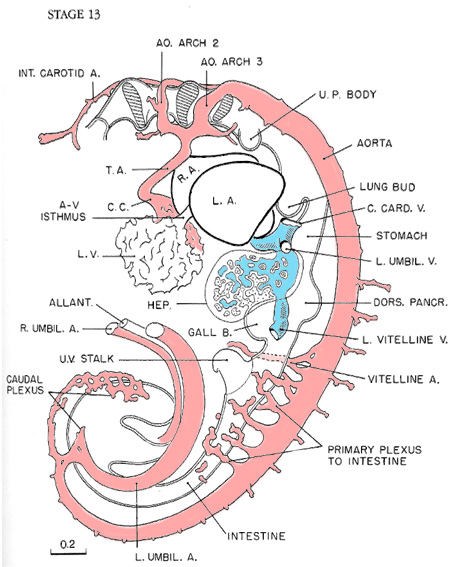
The endocardium and the endothelium of the large arteries. The angiogenesis of the capillary networks throughout the embryo would seem to be a response to their immediate environment. Although the heart and the aortae begin as capillary networks, they soon show individualities that indicate a higher order of specialization. Their form is controlled by a number of factors, including their response to the rapid accumulation of blood plasma, and the hydrostatic effects consequent on the specialization of the cardiac wall, which seems to be limited normally to a defined area of coelomic mesenchyme. Based on Born reconstructions of No. 836, made by Osborne O. Heard.
The above text and accompanying figure are taken from O'Rahilly and Müller, 1987. Adapted from figure 13-4.
Keywords: allantois, angiogenesis, aorta, aortic arch 2, aortic arch 3, atrioventricular isthmus, blood plasma, cardiac wall, caudal plexus, coelomic mesenchyme, common cardinal vein, conus cordis, dorsal pancreas, endocardium, gall bladder, internal carotid artery, intestine, left atrium, left umbilical artery, left umbilical vein, left ventricle, left vitelline (omphalomesenteric) vein, liver, lung bud, primary plexus to intestines, right atrium, right umbilical artery, stomach, truncus arteriosus, ultimopharyngeal pouch, vitelline (omphalomesenteric) artery
Source: The Virtual Human Embryo.
